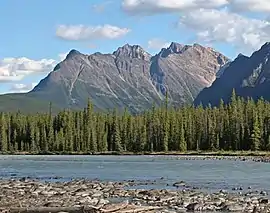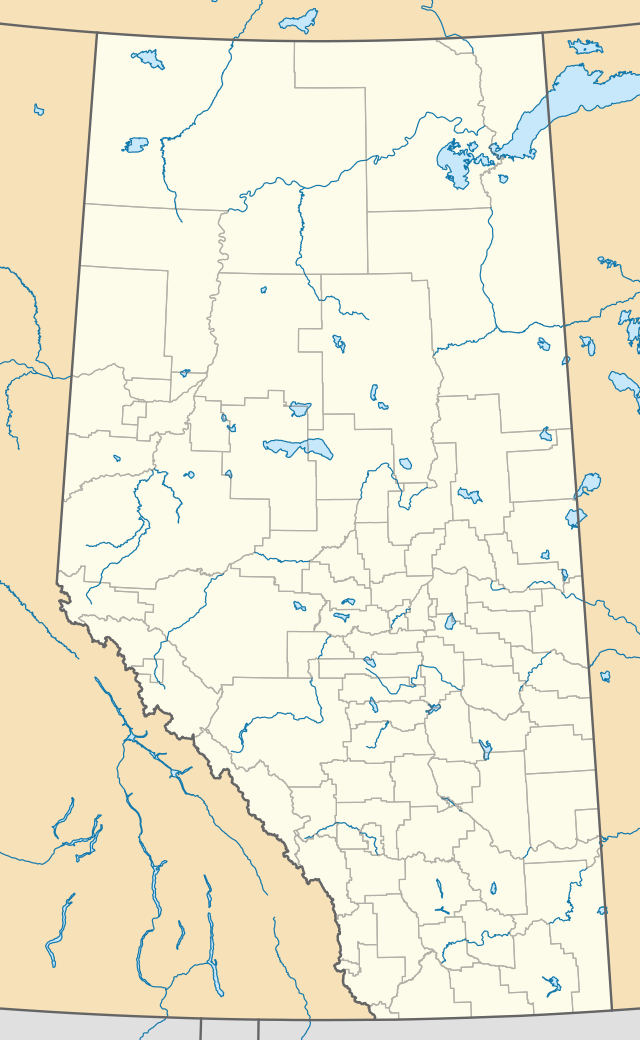Dragon Peak
Dragon Peak is a 2,880 metres (9,450 ft) mountain summit located in the Athabasca River valley of Jasper National Park, in the Canadian Rockies of Alberta, Canada. Situated southeast of Mount Christie and Brussels Peak, Dragon Peak can be seen from the Icefields Parkway. The first ascent of the mountain was made in 1979 by D. Waterman.[1] Dragon Peak was named in 1921 by Arthur O. Wheeler on account of a dragon-shaped rock formation.[1] [3] The mountain's name was officially adopted in 1935 by the Geographical Names Board of Canada.[2]
| Dragon Peak | |
|---|---|
 Dragon Peak seen from Icefields Parkway | |
| Highest point | |
| Elevation | 2,880 m (9,450 ft) [1] |
| Prominence | 246 m (807 ft) [1] |
| Parent peak | Catacombs Mountain (3290 m)[1] |
| Listing | Mountains of Alberta |
| Coordinates | 52°26′46″N 117°42′04″W [2] |
| Geography | |
 Dragon Peak Location of Dragon Peak in Alberta  Dragon Peak Dragon Peak (Canada) | |
| Location | Jasper National Park Alberta, Canada |
| Parent range | Canadian Rockies |
| Topo map | NTS 83C/05 |
| Geology | |
| Type of rock | Sedimentary |
| Climbing | |
| First ascent | 1979 by D. Waterman |
| Easiest route | YDS Class 4-5 [1] |
Geology
Dragon Peak is composed of sedimentary rock laid down from the Precambrian to Jurassic periods, then pushed east and over the top of younger rock during the Laramide orogeny.[4]
Climate
Based on the Köppen climate classification, Dragon Peak is located in a subarctic climate with long, cold, snowy winters, and short mild summers.[5] Temperatures can drop below -20°C with wind chill factors below -30°C. Precipitation runoff from Dragon Peak drains into Fryatt Creek and Luck Creek, both tributaries of the Athabasca River.
References
- "Dragon Peak". Bivouac.com. Retrieved 2019-02-07.
- "Dragon Peak". Geographical Names Data Base. Natural Resources Canada. Retrieved 2019-03-12.
- Place-names of Alberta. Ottawa: Geographic Board of Canada. 1928. p. 44.
- Gadd, Ben (2008), Geology of the Rocky Mountains and Columbias
- Peel, M. C.; Finlayson, B. L. & McMahon, T. A. (2007). "Updated world map of the Köppen−Geiger climate classification". Hydrol. Earth Syst. Sci. 11: 1633–1644. ISSN 1027-5606.